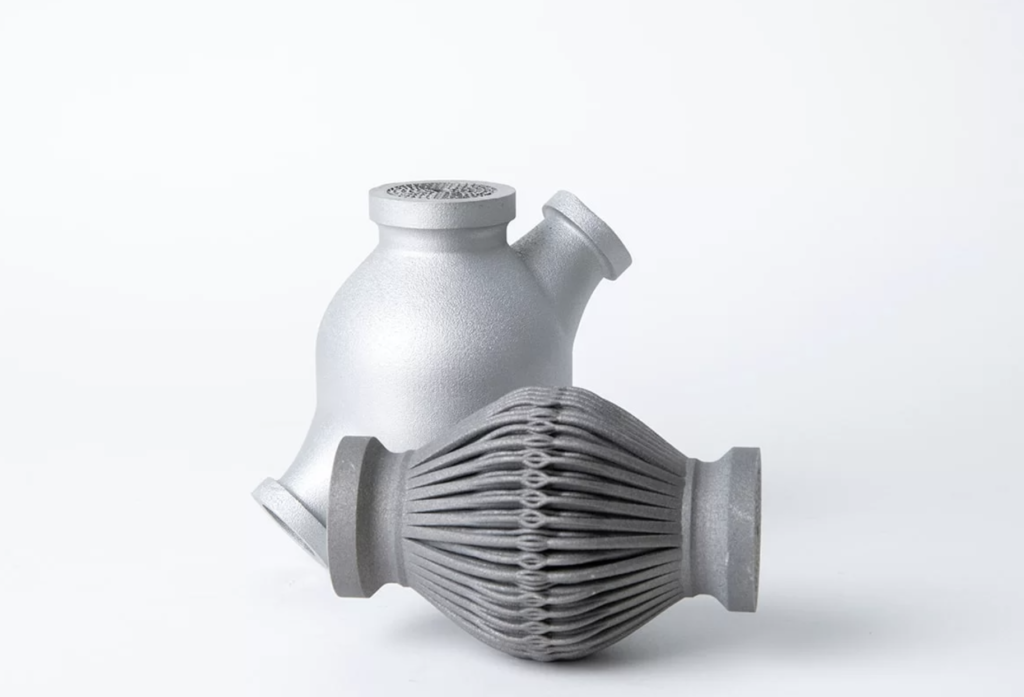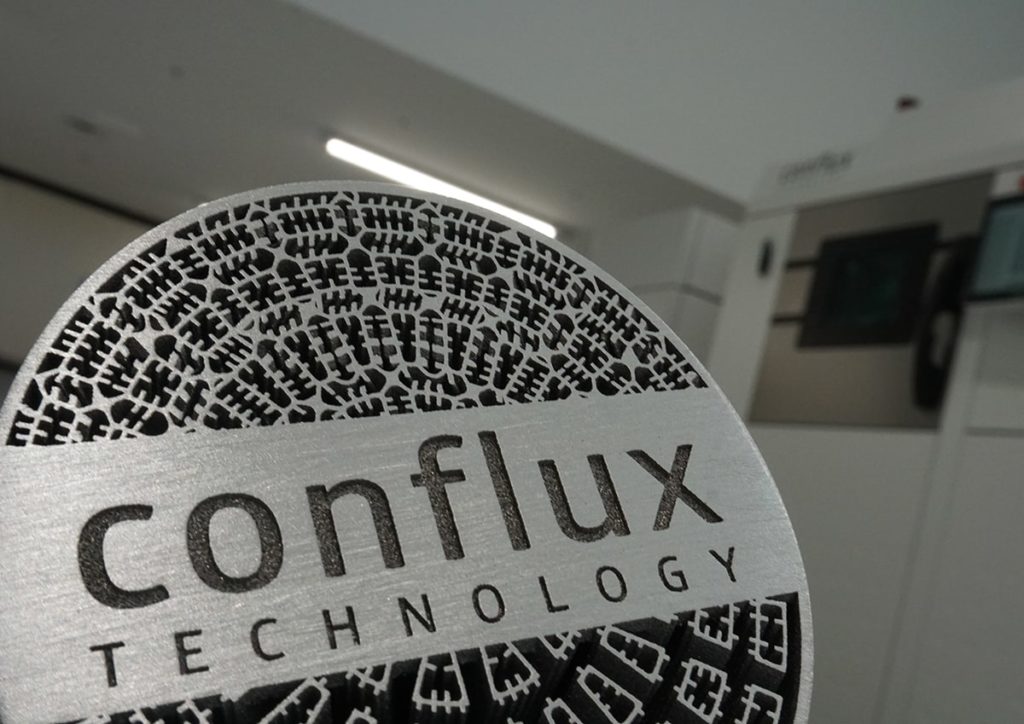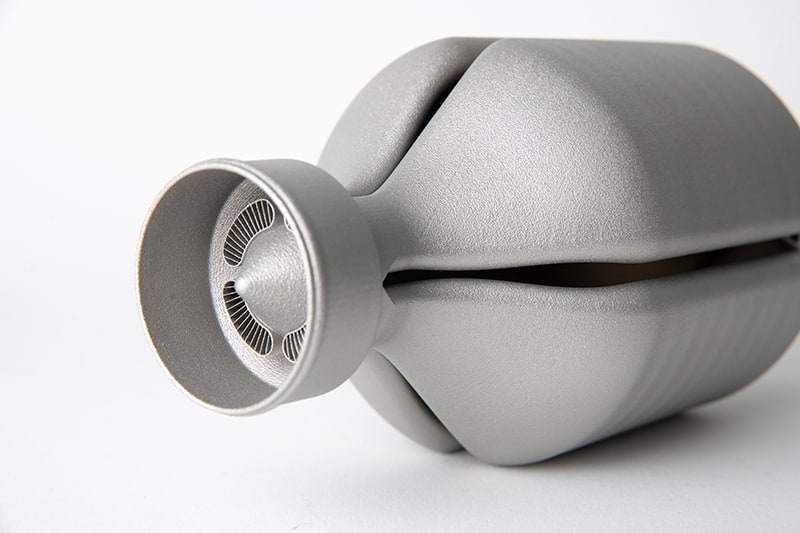Michael Fuller heads up Conflux Technology, an Australian firm that uses powder bed fusion to make heat exchangers for automotive, racing, power electronics, power generation, and aerospace. The company has just received over $6 million in a Series A round from AM Ventures and Acorn Capital. Heat exchangers have seemed to be a market that 3D printing could not really play in because the gulf between conventional manufacturing’s costs and the costs of 3D printed parts. But, starting in niche areas such as Formula 1, 3D printed heat exchangers have been used very effectively. Conflux now wants to make them more ubiquitous through lowering costs and optimising designs. We interviewed Conflux Technology’s CEO Michael Fuller to find out more.

A Conflux heat exchanger
We asked Fuller why exactly 3D printing was a compelling technology for heat exchangers.
He told us that, “There is a real opportunity for three dimensional surface geometry to make a difference. We can put some bends in a geometry or have features on a surface to get a better result. We can also adapt geometry for a specific device or throughout the device. Something like density might change for example. We can also bring more geometry in, to optimise the coefficient of heat transfer. We also benefit from being able to make free form factor, geometries or to conform a part around tight packaging. We also have variable geometry through the fluid domain. Optimal thermal and physical properties change throughout the heat exchange device. With 3D printing we can optimize heat transfer as much as possible through changing geometry.”
“For example think of you boiling water in your kettle. You start with water, this then boils into vapor. The thermal conductivity of water is different to that of steam. If heat exchangers contact both steam and water, ideally you would want different channels, different geometries present as the fluid goes through the device. This complexity and the geometric freedom is decoupled from tooling costs.”
So there lies the crux to the advantage of 3D printing in heat exchange. Not only can we reduce mass or integrate parts or reduce part count but we can also make a device different throughout its body so that the optimal geometry creates the optimal conditions for performance.
Fuller concedes that 3D printing is far from ideal: “We also have suboptimal build angels, we’d like a lot more freedom and its often cost prohibitive…and we’d like to be able to have much thinner walls” But he believes that the further advantages of 3D printing help offset those issues.
“A lot of companies are excited about reducing supply chain complexity, digital inventory, reducing the number of components in assembly, reducing the BOM, quality improvements. At first we mainly had a services offering for heat transfer applications using AM. AM and heat transfer was a curiosity. Now we’re going to be much more of a product oriented business.”

“For that to happen we will need now machines, a new architecture and create a platform that will drive unit costs down. With AM you get a compelling performance advantage but for mass manufacturing to get started costs need to come down.
“Some can be incremental improvement but there also has to be a fundamental engineering redesign. Now you have a rigid as it can get machine. We should decouple the interactions that don’t need to be influencing each other. For example, don’t hold material on the chassis and bring just the amount of material in when needed. We need to know more about what is occurring at the melt pool, and have better sensors. Recoating also needs to be improved, double recoating is a great improvement as is quad lasers. But we need a robust architecture, that leads to high utilization while avoiding lots of downtime. On the whole work needs to be done on the fundamental machine architecture.”
To help achieve this, Fuller sees design and post processing as playing important parts as well.
“With design for AM we can create parts that don’t need to be touched up so much and require less post processing” and “automation will be important in things like powder removal.”
90% of Conflux’s customers are overseas and for now he sees “an aspirational horizon of 10,000 parts per year in series for micro electronics, machines making semiconductors, manufacturing machines. We’re not getting one on every motherboard. But, as we mature we’ll see more applications.”
He sees the key advantages that Conflux has as “working together with design engineers, AM process engineers, heat transfer people, scientists, all with specific expertise. The decades of experience in heat exchangers coupled with AM knowledge is important. Also our IP and design patents are agnostic to the manufacturing process.”
Now the team will work on vertical integration and manufacturing.
“We need to get productivity up, work on certifications, do materials work, this is a nascent industry and we’re going into production.”
Looking back on the path so far Fuller is happy that “we’ve been able to build a business, to take it from the first phase to profitable circumstance. Customers are buying what we were selling and we aim to be the best in the world in heat exchange.”
Subscribe to Our Email Newsletter
Stay up-to-date on all the latest news from the 3D printing industry and receive information and offers from third party vendors.
You May Also Like
3D Printing Unpeeled: New Arkema Material for HP, Saddle and Macro MEMS
A new Arkema material for MJF is said to reduce costs per part by up to 25% and have an 85% reusability ratio. HP 3D HR PA 12 S has been...
3D Printing News Briefs, January 20, 2024: FDM, LPBF, Underwater 3D Printer, Racing, & More
We’re starting off with a process certification in today’s 3D Printing News Briefs, and then moving on to research about solute trapping, laser powder bed fusion, and then moving on...
3D Printing Webinar and Event Roundup: December 3, 2023
We’ve got plenty of events and webinars coming up for you this week! Quickparts is having a Manufacturing Roadshow, America Makes is holding a Member Town Hall, Stratafest makes two...
Formnext 2023 Day Three: Slam Dunk
I’m high—high on trade show. I’ve met numerous new faces and reconnected with old friends, creating an absolutely wonderful atmosphere. The excitement is palpable over several emerging developments. The high...
































